Jamie York Press Content Uploads 2017 Summary Math Skills
Carlos Monroy, Advanced Evaluation Specialist, WES, and Stefan Trines, Research Editor, WENR
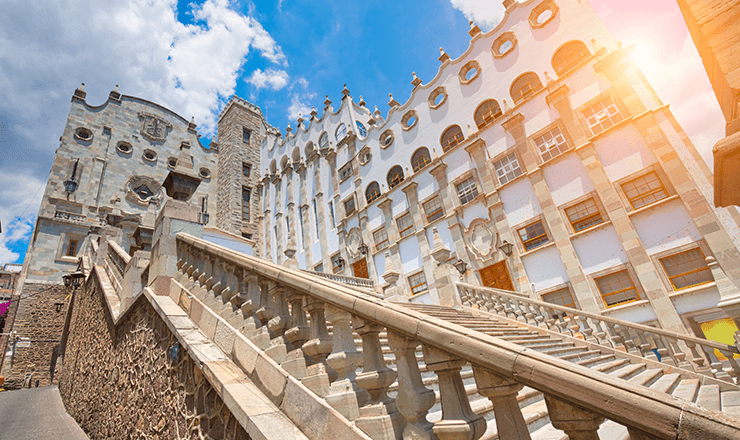
The Academy of Guanajuato
Introduction
Mexico'south new president, the former mayor of Mexico City, Andrés Manuel López Obrador—nicknamed "AMLO"—took office in Dec 2018. The election of a leftist populist in the nation of about 129 million people adds an interesting twist to United mexican states's already strained relations with the The states during the Trump presidency. If AMLO's campaign promises become reality, they could bring nearly major changes for poor and marginalized social groups in Mexico, a state marred past wealth disparities where some 7 percent of the population still lives on less than USD$two per day. AMLO has pledged to alleviate poverty and cease corruption. His ambitious promises include massive railway construction projects, free internet throughout the country, a freeze in gasoline prices, and the doubling of alimony payments for the elderly. Six months into the new administration, the record on these promises is mixed, and many observers doubt whether they can be paid for.
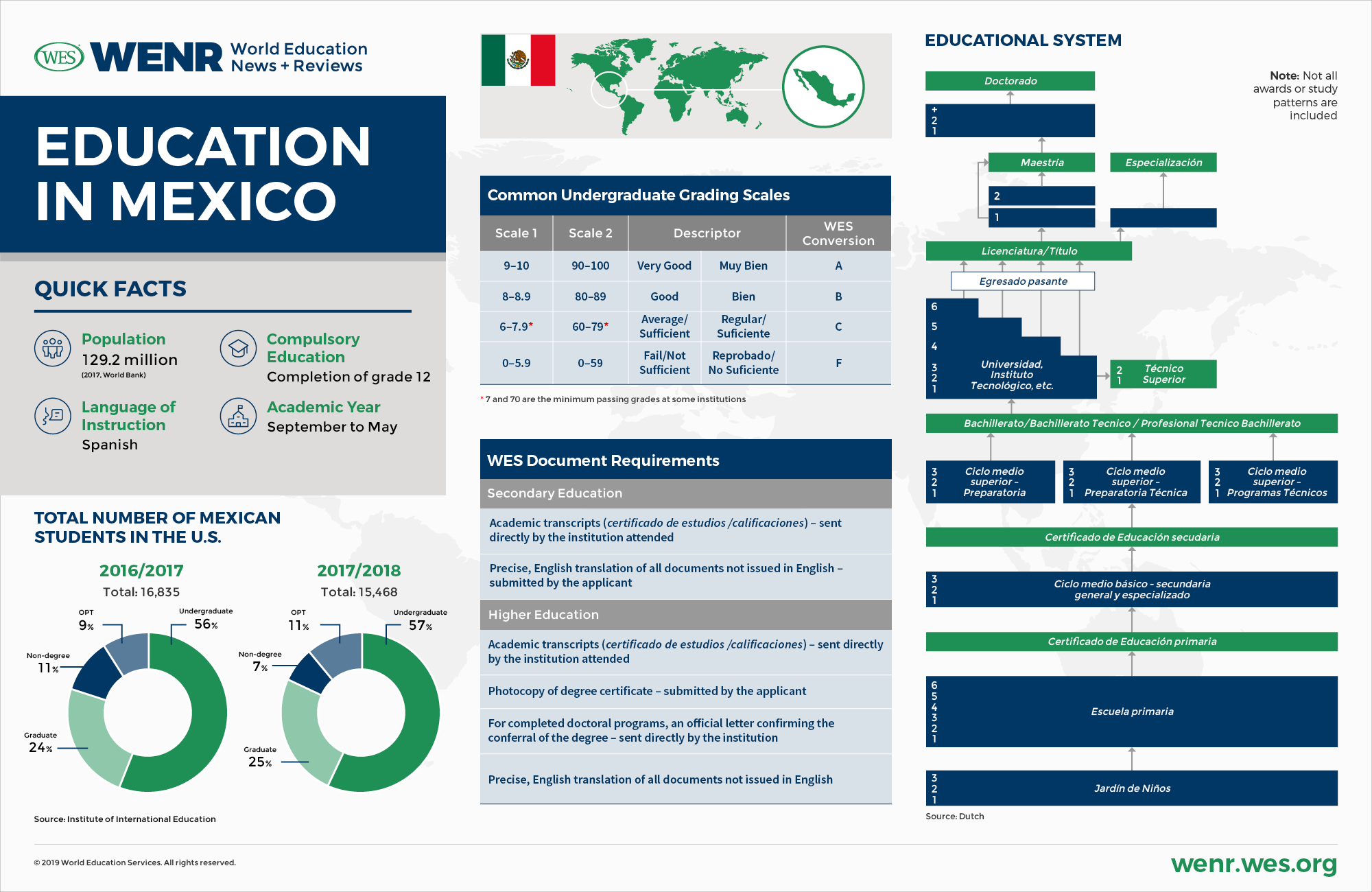
AMLO has vowed to accommodate the surging demand for education past building 100 new universities, eliminating university entrance examinations, and allowing "every person access to higher teaching." Co-ordinate to UNESCO statistics, 3rd enrollments in United mexican states have more than than doubled, going from 1.nine one thousand thousand to 4.iv million betwixt 2000 and 2017,ane placing tremendous stress on United mexican states'southward educational activity system. Despite that growth and recent leaps in educational participation, the country'southward third enrollment charge per unit still trails far backside those of other major Latin American countries. For example, the tertiary gross enrollment ratio (GER) stood at 38 percent in United mexican states in 2017, while information technology ranged from fifty percent in Brazil to 59 percent in Colombia and 89 percent in Argentina, per UNESCO.
Two reasons for these relatively low participation rates are capacity shortages and disparities between the more industrialized key and northern parts of Mexico and the less adult southern states similar Chiapas, Oaxaca, Yucatan, and Tabasco. Mexico is a geographically, ethnically, and linguistically diverse land that comprises 32 states. Its more than threescore languages are spoken by and large by ethnic ethnic groups in the south, a region historically neglected by the fundamental government. It is within these underfunded rural regions that educational participation and attainment rates are extremely depression. Literacy rates in usa of Chiapas and Oaxaca, home to the largest percentages of indigenous peoples in Mexico, are more than 10 times lower than in Mexico Urban center or the northern state of Nuevo León.
In an attempt to heighten educational activity participation rates across the nation, the Mexican government in 2012 made upper-secondary didactics compulsory for all children by 2020. However, inadequate funding and administrative obstacles accept thus far prevented universal implementation of this goal, particularly in marginalized rural regions. The new AMLO assistants has besides vowed to provide financial assistance to upper-secondary students to reduce loftier school dropout rates.
Despite the still comparatively low enrollment ratios, Mexico is expected to be 1 of the globe'south top 20 countries in terms of the highest number of tertiary students by 2035. It will be a fundamental challenge for the Mexican government to ensure quality of instruction amongst this rapid massification. The bug United mexican states faces in this regard are manifold. The country ranks at the bottom of the OECD PISA study2 and ranked only 46th amidst 50 countries in the 2018 Ranking of National Higher Education Systems by the Universitas 21 network of research universities.
Attempts by the administration of President Enrique Peña Nieto (in part from 2012 to 2018) to ameliorate teaching standards are currently in limbo. Nieto had sought to raise standards for the hiring, evaluation, and promotion of teachers, but the reforms were met with tearing resistance from United mexican states's powerful National Instructor'southward Union (SNTE)—the largest teacher's union in the Americas with almost one.5 million members that has been repeatedly charged with abuse. In the presidential elections, the SNTE supported AMLO, who vowed to stop the controversial reforms. Noting that new evaluation mechanisms for teachers had resulted in a 23 percent enrollment decrease at public teacher training colleges and increasing numbers of teachers requesting retirement, the new administration has promised to reinstate teachers that had been laid off considering they had refused to submit to performance exams. Other changes include the dismantling of the National Found to Evaluate Educational activity (INEE), an autonomous body under the Ministry of Education tasked with reducing corruption in teacher-hiring practices, and holding teachers to account past tying their pay, promotions, and tenure to performance on standardized exams.
Improving Mexico's education organization is critical for addressing pressing problems like loftier unemployment rates amongst Mexican youths, who are unemployed at twice the rate of the overall working age population. There were reportedly 827,324 immature people unable to find unemployment in Mexico in 2018 —58 percent of whom held an upper-secondary school diploma or academy degree. However, structural problems and severe funding shortages continue to impede progress. As U.Due south. News and World Report reported in 2018, "… education spending dropped by more than 4 percentage compared to the previous twelvemonth, with the textbook budget cut by a third and funding for … educational reforms … slashed past 72 percent. (…) "Meanwhile, the 2017 budget for teacher preparation was cut by nearly 40 per centum."
International Student Mobility
Mexico is an important sending country of international students in the Americas, notably to the neighboring The states. Between 2000 and 2017, the number of international caste-seeking Mexican students increased by 114 percentage, from 15,816 to 33,854 students, co-ordinate to the UNESCO Institute for Statistics (UIS). Among the drivers backside this growth is the vastly increased number of tertiary students in Mexico, as well as the country's rise number of center-income households—factors that enlarge the pool of potential international students able to afford an education abroad. Mexico's 3rd educatee population more doubled since the beginning of the last decade, from 2 meg in 2001 to 4.4 million in 2017, every bit per UIS. The number of middle-income households earning an annual bacon of between USD$15,000 and USD$45,000 simultaneously quadrupled and deemed for up to 47 per centum of all households in 2015.
Another factor that helps drive growing numbers of students overseas is the surging need for English language education in Mexico due to the increasing internationalization of Mexico's economy, its need for skilled human capital letter, and the growth of Mexico's tourism industry. It has been estimated that the number of outbound English Language Pedagogy (ELT) students increased past 35 percent between 2011 and 2013 alone, making Mexico the 18th-largest market for ELT in the world. Many Mexicans view English language language acquisition as an investment that is positively correlated with occupational status and household income. In the long term, United mexican states has tremendous potential for further increases in outbound student flows underpinned by continued population growth. While birth rates in United mexican states have fallen significantly and Mexican gild is aging, nearly 46 per centum of the country's population is still under the age of 25. The total population is expected to grow to 164 million by 2050 (UN medium variant projection). It should be noted, however, that there's been a shift away from the U.South. and a greater diversification in destination countries in recent years.
Downturn in Educatee Flows to the U.S.
According to UNESCO, the U.S. is past far the nigh popular written report destination of Mexican students. The organization'south data show that well-nigh one-half of all international Mexican degree-seeking students (17,032 in 2017) are enrolled in the U.S., trailed distantly by Spain with two,447 students, French republic (2,433 students), the Uk (2,008 students), and Canada (1,587 students). While Mexican clearing to the U.S. has slowed in contempo years, Mexicans are withal the largest immigrant grouping in the U.S. with 11.3 million people—a vast transnational network that helps bulldoze pupil inflows. Geographic proximity also makes the U.S. an obvious choice for many Mexican students. More than 40 pct enroll in states close to the edge where they can save on housing and tuition costs by living in Mexico while paying in-state tuition at a number of institutions, such equally the Academy of Texas at El Paso, the largest host university of Mexican students, New United mexican states State University, and the University of North Texas.
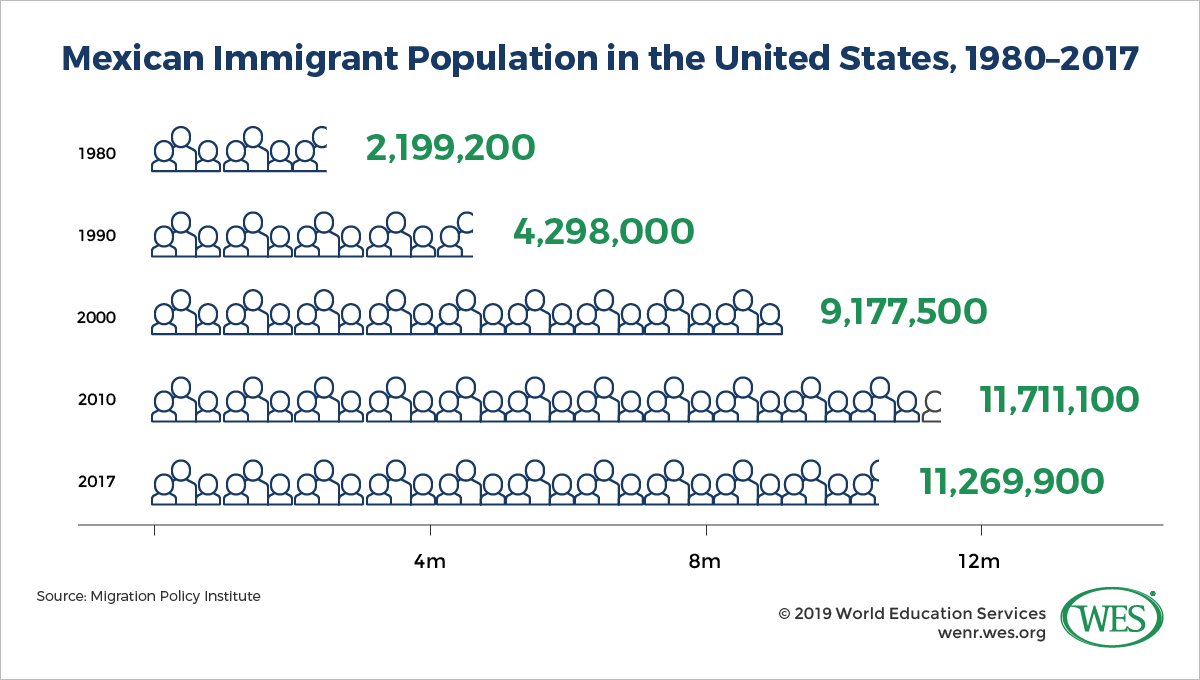
Economic integration within the North American Gratuitous Trade Agreement has also helped spur pupil inflows and created an surround that stimulated university partnerships, dual caste programs, and research collaborations, often involving institutions close to the border. Finally, bookish commutation between the 2 countries has been fueled by the establishment of large-calibration scholarship programs on both sides of the edge in recent years. Mexico, for case, in early 2014 initiated Proyecta 100,000, a project aimed at boosting Mexican enrollments in the U.Southward. to 100,000 by 2018 with scholarships and academy partnerships, while increasing the number of U.S. students in Mexico to fifty,000. According to Open Doors educatee data of the Institute of International Education (IIE), Mexican enrollments in the U.South. increased by 15.4 pct betwixt 2012/thirteen and 2014/15 alone. These gains followed an increase in Mexican student enrollments by 50 per centum over the previous 14 years, from 9,641 students in 1998/99 to 14,199 students in 2012/thirteen.
However, such increases came to a halt in 2015, and Mexican student enrollments take recently tanked. While there may exist boosted factors at play, information technology is probable that the anti-Mexican demagoguery of Donald Trump has had a chilling effect on Mexican students and their parents. A survey of twoscore,000 international students conducted in March 2016 found that as many every bit 8 in ten Mexican students were less likely to study in the U.S. if Trump won the election—far more the global 6 out of 10. These sentiments are likewise reflected in other opinion polls. The PEW Research Center reported in 2017 that favorable views of the U.S. in Mexico had dipped by 36 percent points since Trump took office—the steepest drop in all countries surveyed. Merely 30 percent of Mexicans held positive views of the U.Southward., while confidence in Trump was but 5 percent—the lowest rating of whatsoever U.S. president since Pew began polling in Mexico.
The number of Mexican enrollments declined by viii.1 percent between 2016/17 and 2017/18 (IIE), even though United mexican states remains the ninth-largest sending country of international students to the U.S.—and at that place are currently few signs that this trend volition reverse in the about future. Electric current visa data by the Department of Homeland Security reverberate a farther decrease of 3.8 percent in active pupil visas held by Mexican nationals between March 2018 and March 2019.
Co-ordinate to IIE, there are soon xv,468 Mexican students in the U.S., 57 pct of whom study at the undergraduate level. Another 25 percent study at the graduate level and vii percentage in non-degree programs; the latter category has seen a desperate refuse of 39 percentage between 2016/17 and 2017/18. Eleven percent pursue Optional Practical Grooming; business organisation and engineering fields are the virtually popular majors among Mexican students.
Shifts to Other Destinations
Whereas Mexican enrollments are declining in the U.South., other countries are experiencing gains. The number of Mexican degree students in Deutschland, for example, grew past 23 percent betwixt 2013 and 2016, per UIS information. That said, given the surging demand for ELT in United mexican states, English-linguistic communication-speaking destinations like the U.Grand. or Australia, where Mexican enrollments have lately also grown robustly, may benefit virtually from shifting Mexican student flows. This shift is reflected, for instance, by a growing interest in Canada. While the number of Mexican degree students in Canada is still small with i,587 students in 2016 (UIS), the Canadian government reports that the overall number of students, including non-degree students, at present stands at 7,835—an increase of 132 percent over the number in 2008.
It is likely that ELT enrollments are a stiff commuter of this growth. Canada's authorities has fabricated increased efforts to attract Mexican ELT students. It expanded air service with Mexico and in 2016 removed visa requirements for Mexicans arriving for short-term study visits of upward to six months. Mexico is also a meridian priority state of Canada's internationalization strategy. Bated from ELT, governments and universities on both sides have recently taken steps to boost student mobility in academic programs, including new scholarship programs and bilateral research agreements. Overall, Canadian universities anticipate strongly ascension educatee inflows from Mexico in the near future. Equally one Canadian educator told the PIE News, "Canada has always been pop, but we accept always had to compete with the Us; that is now changing due to the 'Trump outcome.'"
Inbound Student Mobility
The number of international students who view Mexico as an didactics destination is comparatively minor, just the country recently witnessed a marked uptick in educatee inflows despite recurring media reports of kidnappings, violence, and abuse. According to UIS information, the number of international students in the country doubled to 25,125 between 2016 and 2017. It should be noted, however, that actual gains may be smaller: Data provided by Mexican statistical agencies, such equally Patlani, differ significantly, and information on Mexican mobile students may be incomplete, including for certain years. That said, the bureau information also reflect increases in international student inflows. According to Patlani, there were 20,322 international students in Mexico in 2015/16, compared with fifteen,608 in 2014/xv. Most of them studied at the undergraduate level; slightly more than than half enrolled in degree programs while the rest attended short-term courses.
The elevation three sending countries, according to Patlani, were the U.S., Colombia, and France. Whereas fewer Mexican students are going to the U.South., pupil flows in the other management appear to be on the ascent. While the total number of U.Due south. students in United mexican states is much lower than it was a decade ago, IIE reports that U.South. educatee enrollments in Mexican short-term study abroad programs increased by 9.9 percentage and 10.8 percent in 2015/xvi and 2016/17, respectively. These information indicate that in that location were 5,736 U.S. short-term students in Mexico in 2016/17, making Mexico the 12th well-nigh popular report abroad destination worldwide among U.S. students. And United mexican states is not only a popular destination for study away programs, but also for degree-seeking students from the United States. Per UIS, 44 percentage of all international caste students in Mexico (xi,109 students) came from the U.S. in 2017. Data for 2016 and other recent years are unavailable.
In Brief: Mexico'southward Education Arrangement
Education in Mexico was historically influenced past the Cosmic church, which provided pedagogy during the colonial era. In 1551 the church established the get-go university in North America, the Royal and Pontifical University of United mexican states, in Mexico Urban center. Just Catholic education was mainly reserved for the aristocracy, clergy, and other ruling elites, while near of the indigenous population learned by way of oral tradition. It was not before independence and the germination of a modernistic state that Mexico's government began to slowly establish tighter control over educational activity and class a modern system that would address the needs of the broader segments of club. In the 19th century, compulsory instruction for children between the ages of 7 and 15 was introduced, and education became increasingly secularized. After the Mexican revolution (1910 to 1920), Mexican authorities focused on eradicating illiteracy and on advancing rural teaching and the inclusion of ethnic peoples. Notwithstanding, forming a national identity through teaching has been a challenge. Choosing Spanish as the language of didactics, for instance, resulted in high illiteracy and desertion rates among indigenous peoples—a circumstance that caused the introduction of bilingual programs in recent decades.
While educational participation rates in Mexico are however low compared with those of other major Latin American countries, Mexico's education system has since expanded quickly. Illiteracy rates among the population over the age of 15 decreased from 82 percentage at the cease of the 19thursday century to less than v per centum today. Between 1950 and 2018, enrollments in the formal instruction system—elementary through graduate teaching—grew more than 12-fold, from three meg to 36.4 million students. The third growth enrollment ratio (GER) jumped from xv percent in 1990 to 38 percent in 2017 (UIS).
The upper-secondary GER, likewise, has doubled since the 1990s, but disparities persist betwixt more than affluent jurisdictions and poorer states. Per Mexican government data, 64 pct of the population between the ages of twenty and 24 had completed upper-secondary education in United mexican states City, only just 40 per centum did so in Chiapas. While states similar Aguascalientes, Mexico City, Nuevo León, Sinaloa, and Sonora have tertiary enrollment rates above xl percent, these rates are below 20 percent in Chiapas, Guerrero, and Oaxaca. The contrast is starkest between Mexico Metropolis, where the enrollment rate reached 72 percent in 2017, and Chiapas, where it stood at merely fourteen pct.
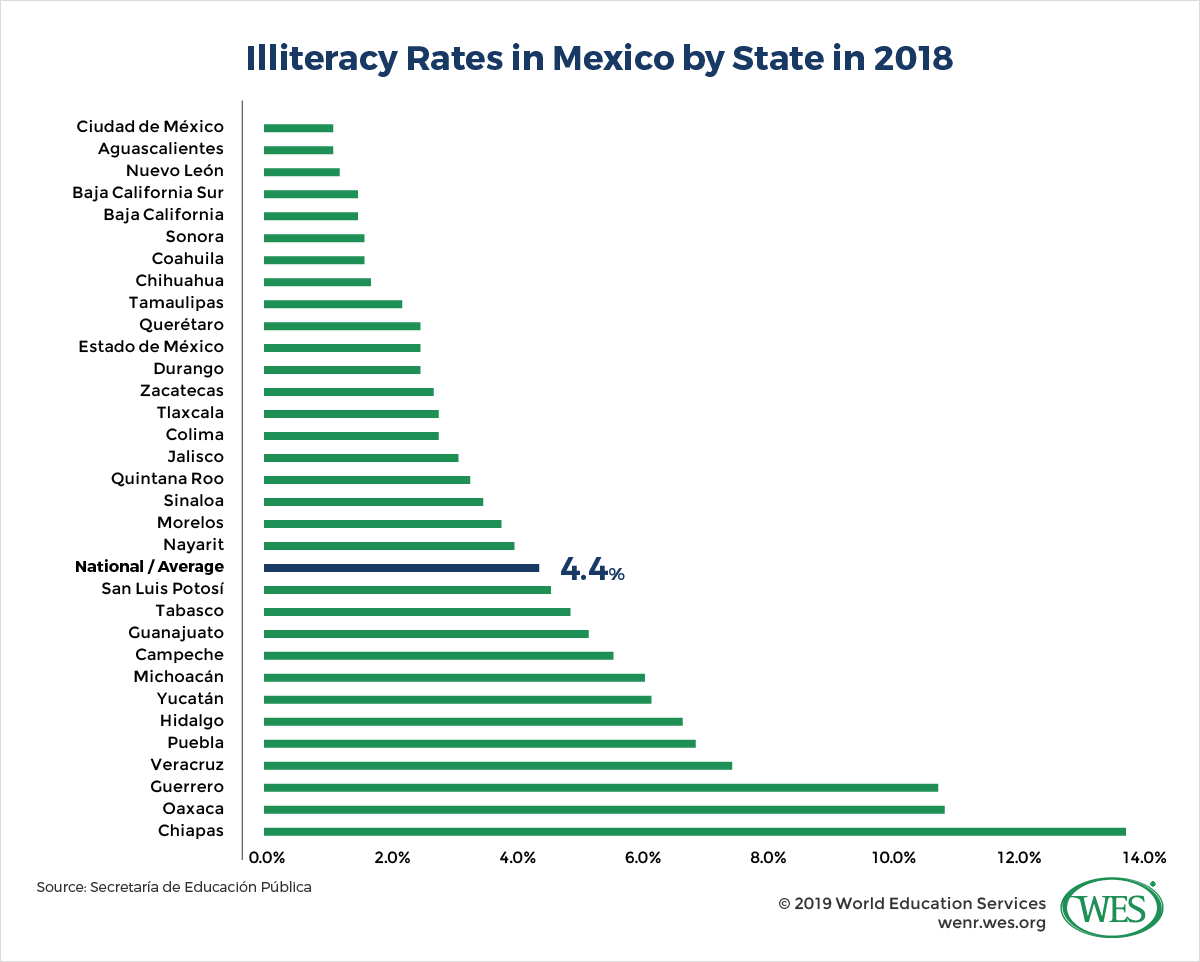
Administration of the Education System
Officially called the United mexican states, Mexico is a federal land that comprises 32 regions that are also chosen states (including the city of Mexico, an autonomous federal entity). The assistants of its educational activity arrangement is the shared responsibleness of the national ministry of education, Secretaria de Educación Pública (SEP), and the 32 land-level jurisdictions. Autonomous higher educational activity institutions (HEIs) similar the National Autonomous University of Mexico too play an important oversight role. These generally large public universities operate with a loftier caste of freedom from government regulations and have the right to approve and validate programs of private HEIs and upper-secondary schools. Autonomous institutions act equally de facto educational authorities in that they grant official recognition to other institutions in a similar way as government authorities.
Since 1992, Mexico has decentralized its teaching organisation and express the role of the cardinal government in didactics. Under financial strain, the federal government gradually transferred the administration of more schools to the state governments and granted autonomy to more HEIs. The percentage of students enrolled in HEIs administered at the country level recently increased from 14 percent in 2008/09 to 21 percent in 2017/18, while just 13 percent study at institutions administered by the federal government. Xxx-six per centum of students are enrolled in autonomous institutions, and the remaining xxx percentage in private institutions. Autonomous HEIs and their affiliated institutions play only a marginal role in elementary and lower-secondary instruction, but they enroll 12 per centum of upper-secondary students.
This multiplicity of quality assurance providers in the Mexican federation results in a highly complex system in which various quality standards, academic calendars, and regulations coexist non just between states, but also inside states, regions, and urban and rural areas. Upper-secondary school curricula, for example, tin can vary significantly between states and institutions, notwithstanding recent efforts by the federal government to standardize curricula across the nation (see the upper-secondary instruction department). Elementary and lower secondary curricula are set by the state and federal governments.
Structure of the Education System
Mexico's education constabulary defines 3 principal levels of pedagogy: basic education (educación básica), upper- secondary education (educación media superior), and higher didactics (educación superior). Each level of education is further subdivided every bit follows:
- Educación Basica (Basic Education)
- Educación Preescolar(early on babyhood education): Ages 3–6
- Educación Primaria(elementary education): Grades 1–6
- Educación Secundaria(lower-secondary education): Grades 7–9
- Educación Média Superior (Upper Secondary Educational activity): Typically grades x–12
- Bachillerato General (full general academic)
- Bachillerato Tecnológico (technological education)
- Profesional Técnico (vocational and technical education)
- Educación Superior (College Teaching)
- Técnico Superior (post-secondary/acquaintance/diploma)
- Licenciatura (undergraduate and first professional degrees)
- Postgrado (graduate/postgraduate education)
Preschool Educational activity
Since the 2008/09 bookish twelvemonth, all Mexican children are required by police to attend three years of early childhood instruction (educación preescolar) beginning at the age of three. This is a gradual increase from previous years when preschool educational activity was either not compulsory or express to one or two years.three Earlier the enactment of these recent reforms, state governments ran a variety of different early babyhood programs alongside private institutions with fiddling or no governmental regulation or supervision. However, the provision of preschool education was patchy and limited to by and large urban areas until the decentralization of the Mexican education arrangement in 1992.
Considering of the new requirements and major investments in infrastructure and human being resources, the early childhood education sector experienced the largest enrollment increases of all sectors since the 1990s. In 2017/18, iv.9 million children attended preschool, an increase of 42.five pct over 2001/02 when but 3.4 million children benefitted from this form of schooling. Private schools are at present more than closely regulated, but enroll only 15 percent of children, while 85 percent of children nourish public institutions. The majority (88 per centum) of children are enrolled in general schools, whereas 8 pct attend special schools for indigenous peoples that provide intercultural bilingual education. Another 3 percent attend special community schools located in rural districts of less than 500 inhabitants. The national pre-simple GER stood at 72 percent in 2017 (UIS).
Elementary Pedagogy
Public elementary instruction is supervised by the SEP in coordination with the state governments which administrate the bulk of schools (accounting for 85 percent of enrollments). Schools nether the directly control of the federal regime account for just 5.5 pct of enrollments, mostly in Mexico City and in rural customs schools. But the SEP sets nationwide standards and curricula for both public and private institutions (which enroll close to ten per centum of pupils). The SEP determines schoolhouse calendars, designs and distributes free textbooks, and oversees instructor training. Until 2019, the now decommissioned federal National Institute for Assessment of Education (INEE) monitored quality standards in schools and collected didactics information. It is before long unclear if and how the new AMLO assistants wants to replace the institute, and critics are concerned that the absenteeism of INEE monitoring and objective data gathering will be detrimental to educational quality.
Elementary teaching is six years in length (grades one through half-dozen) in all states. Children generally enter at the historic period of six, although there are options for students over the age of 15 who did not complete their teaching. Virtually pupils enroll in general schools, just about 6 pct study a bicultural (ethnic) and bilingual curriculum. Shut to ane percent attend customs programs (cursos comunitarios), which are offered in rural districts of less than 100 inhabitants.
The national curriculum includes Castilian, mathematics, social studies, natural sciences, civics, arts, and physical education. Each class is assigned i teacher that instructs all subjects throughout the year. Teachers rotate in each grade, although teachers in community programs may stay with 1 group of pupils for several years. Upon completing grade six, pupils are awarded the Certificate of Primary Education (Certificado de Educación Primaria). In that location are no concluding graduation examinations.
Every bit noted before, simple education is the but sector of Mexico's didactics system in which enrollments have decreased—from 14.7 million in 2007/2008 to 14 million in 2017/xviii. While participation is nearly universal and dropout rates are close to zip in states like Querétaro, Quintana Roo, and Nuevo León, the state of affairs in impoverished rural states is more problematic. Shut to 12 percent of pupils in the southern state of Oaxaca, for example, practise non consummate elementary school. What'southward more than, spending on elementary education is far below the OECD average, and many observers consider elementary education in Mexico to be of lackluster quality. The World Economical Forum ranked Mexico'due south educational quality at the elementary level 69th out of 130 countries (behind Argentina, Chile, Uruguay, Colombia, and Peru, but ahead of Brazil, Republic of ecuador, and Venezuela). United mexican states ranked 58th out of 72 countries in the 2015 OECD PISA study, making it the worst-performing country amid all OECD fellow member states.
Lower-Secondary Educational activity (Educación Secundaria)
Lower-secondary education is 3 years in length (grades seven through ix) and was made compulsory in 1992—a modify that helped heave enrollments from 4.i million in 1991/92 to 6.5 meg in 2017/eighteen. There are no entrance examinations at public schools, and shut to 98 pct of pupils who complete elementary didactics go along to lower-secondary education. It's of import to note that in Mexico educación secundaria ever refers to lower-secondary education and not upper-secondary teaching (dissimilar in another Latin American countries). Secondary schools have unlike names; they may be calledcolegios , escuelas , or institutos.
Lower-secondary programs are offered in a full general academic track (secundaria general), and a vocational-technical track (secundaria técnica). Earlier upper-secondary educational activity was made mandatory, the vocational track was designed to fix students for both upper-secondary education likewise as employment in industry, commercial fields, agriculture, or forestry. Both programs take a mandatory general academic core curriculum set by the SEP that includes Spanish, mathematics, biology, chemistry, physics, history, civics, geography, arts, and a strange linguistic communication. English language was recently made a compulsory subject. Mexican states may besides have individual "land subjects," which focus on historical, cultural, or ecology aspects that are specific to the local jurisdiction.
In add-on to standard general academic and vocational programs, there are distance learning programs (telesecundaria) designed to bring education to far-flung rural communities via idiot box, videotapes, or the cyberspace. Very modest numbers of students are likewise enrolled in in-classroom community programs (secundaria comunitaria) and programs for working adults (secundaria para trabajadores). Learning conditions in distance and customs education programs are usually more challenging, and dropout rates are college. While there are designated teachers for each subject in the other types of schools, curricula in these programs are often taught past a single teacher for all subjects.
Slightly more than half of lower-secondary students currently report in full general academic programs, while 27 percent attend vocational programs, and 21 percentage study in altitude pedagogy mode. Graduates from all programs are awarded the Certificate of Secondary Education (Certificado de Educación Secundaria). There are no graduation examinations.
As in other stages of education, lower-secondary participation rates vary widely between states and indigenous groups. Marginalized regions nonetheless have inadequate infrastructure and resource. Whereas graduation rates topped xc per centum in the industrialized states of Baja California Sur and Hidalgo in 2017/18, that number did not exceed 76 percent in Michoacán. Overall lower-secondary enrollment ratios in rural regions and indigenous communities trail those of urban areas and other social groups by significant margins.
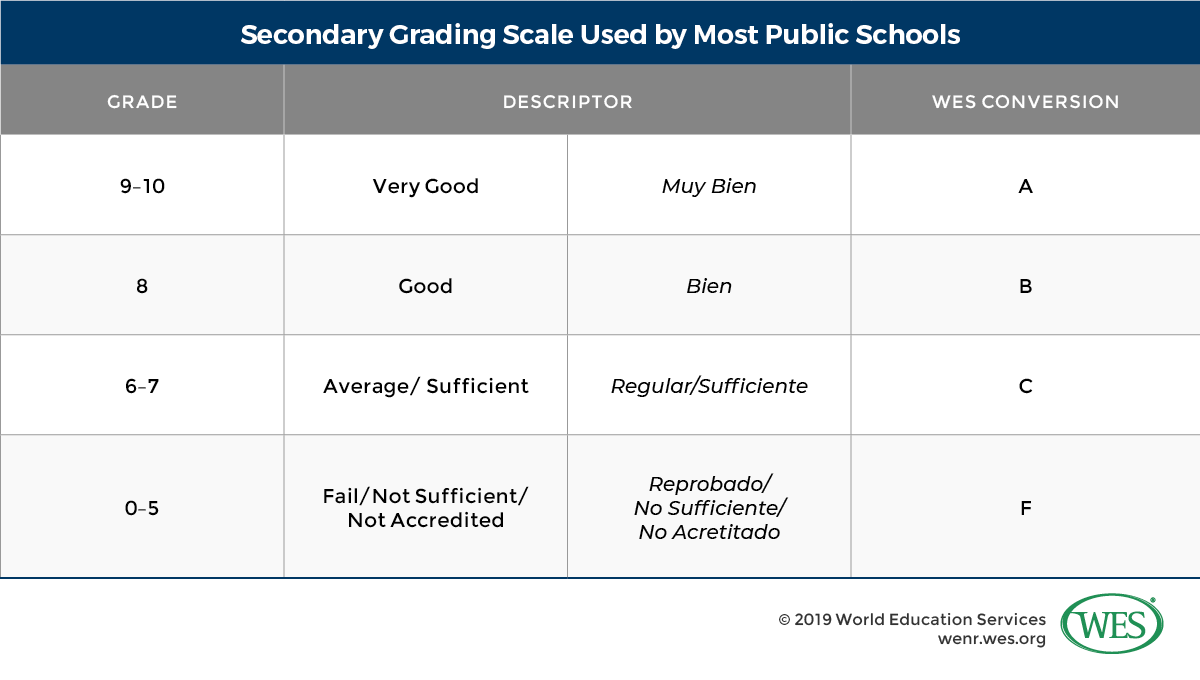
Upper-Secondary Teaching (Educación Média Superior)
Upper-secondary instruction lasts three years (grades 10 to 12), although some vocational programs and those offered by autonomous institutions may exist from two to four years in length. It'south free of charge at public schools and has been compulsory for all students since 2012. Enrollments are higher in urban areas, simply nationwide pupil numbers have nearly doubled over the terminal ii decades, from 2.seven million in 1997/98 to 5.2 million in 2017/18.
Making upper-secondary pedagogy universal volition remain a claiming for years to come, however. While SEP data show that most all students who complete lower-secondary education enroll in upper-secondary school, the nationwide graduation rate is currently simply 67 percent. Merely twenty percent of students from households in the lowest income bracket complete upper-secondary school. To increase graduation rates, the Mexican regime provides scholarships to many students. Notwithstanding, later increases in spending for these scholarships in previous years, funding has recently been scaled back. Since 2016 the number of recipients has decreased by more than 240,000. The government recently acknowledged that achieving universal participation in upper secondary education might take ii decades longer than originally anticipated.
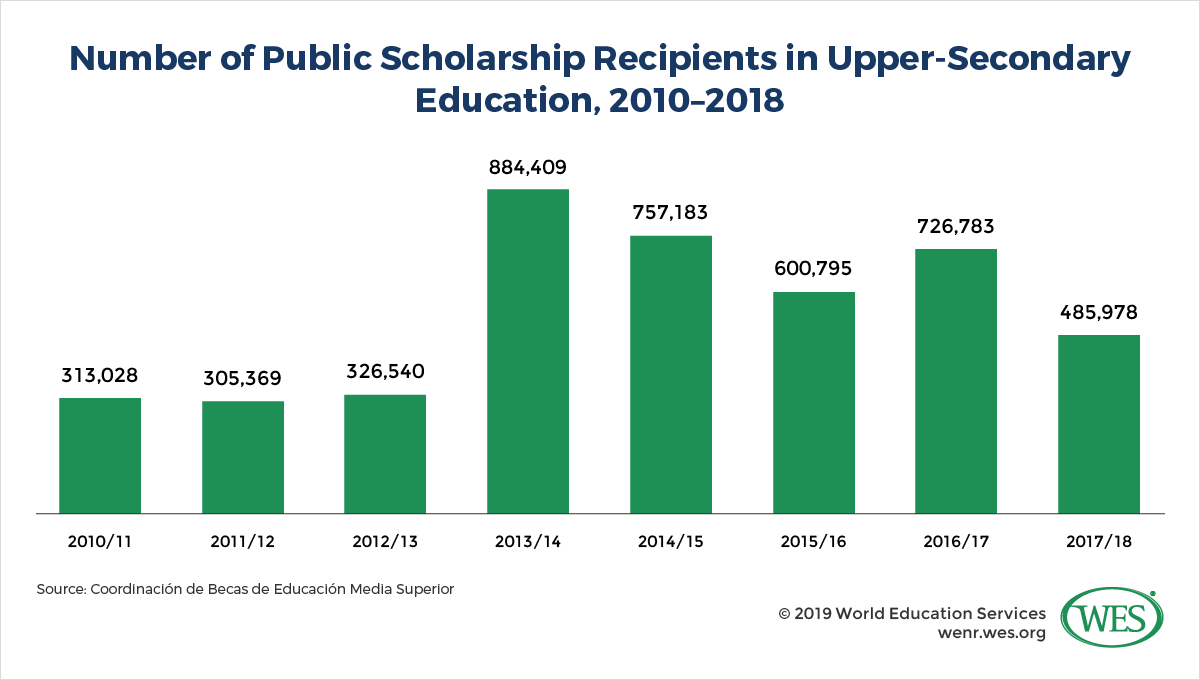
Loftier schools are administered past the federal regime, state governments, and autonomous institutions, which, as mentioned earlier, are mostly large public universities. Autonomous universities that provide upper-secondary didactics tin can independently blueprint their own curricula. Admission to these programs frequently involves entrance examinations and is often more than competitive than admission to state and federal schools. Many students that complete upper secondary education at an democratic university continue their studies in higher instruction programs at the same establishment. Around 12 percent of all upper-secondary students currently study in such programs, while 47 percentage study at state schools and 21.5 pct enroll at federal schools. Some 19 percent attend private schools, which are located mostly in larger cities and include religious and international schools. Since the private schools charge tuition fees, many of them are better equipped and provide high-quality teaching, simply they are usually out of achieve for low-income households.
Given the multiplicity of providers and curricula in Mexico, its upper-secondary school system has been characterized by a loftier degree of diversity and fragmentation. It was historically perhaps the virtually heterogeneous system in Latin America—a circumstance that complicated the mutual recognition of credentials and the transfer of students betwixt programs. However, the federal regime in 2008 introduced a national curriculum framework (marco curricular común) and high school system (sistema nacional de bachillerato) in order to harmonize upper-secondary education. The arrangement defines desired learning outcomes in mathematics, Castilian, English language, biology, chemistry, physics, geography, history, and economics. While its adoption is voluntary, 4,284 Mexican schools enrolling 52 pct of students have implemented the system as of 2019, and more are expected to bring together. Information technology should be noted, notwithstanding, that distance learning and community high schools (telebachillerato comunitario) and other types of schools go along to utilize different curricula, so a sure caste of heterogeneity volition persist in Mexico'south system despite the reforms.
There are three chief types of upper-secondary programs: general academic (bachillerato general), technological (bachillerato tecnológico), and vocational-technical (técnico profesional). Virtually students (63 percentage) enroll in a full general academic program, while 30 per centum study in the technological stream. The residual attend vocational-technical programs.
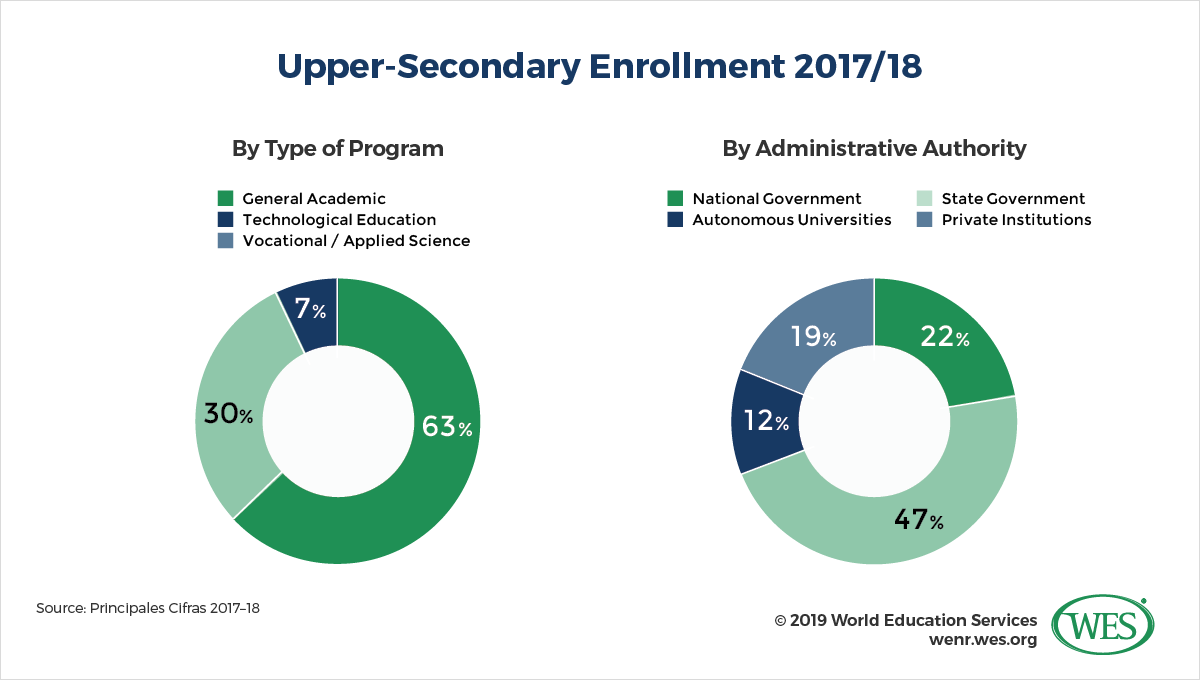
Bachillerato Full general ( General Academic)
General academic programs are designed to set up students for higher education. Admission requires the Certificado de Educación Secundaria too equally entrance examinations, depending on the programme. The curriculum comprises general subjects, including those of the marco curricular común, just students usually specialize in sciences or social sciences in their final year. English is compulsory. The formal credential awarded upon completion of this stage is the Certificado de Bachillerato, simply it should be noted that graduates exercise not e'er receive a graduation certificate. Instead, they may simply get an bookish transcript (Certificado de Estudios) indicating that they have completed the bachillerato program or university-preparatory studies (preparatoria). The same holds truthful for technological programs that contain university preparatory studies.
Bachillerato Tecnológico (Technological)
Technological loftier schoolhouse programs feature a general academic core curriculum. It is very similar to Bachillerato General programs in addition to several employment-geared technical specialization subjects in fields like agricultural technology, business organization, informatics, industrial applied science, marine engineering science, nursing, or tourism. The curriculum is designed primarily by the federal authorities, as well as past land governments which may offer specializations relevant to local industry. Because of different curricula in private jurisdictions, there's oftentimes an overlap between Bachillerato Tecnológico and Técnico Profesional programs that are offered in unlike states in fields like accounting, business organisation, computer science, or nursing. Technological programs provide access to higher educational activity in the same way equally full general academic programs.
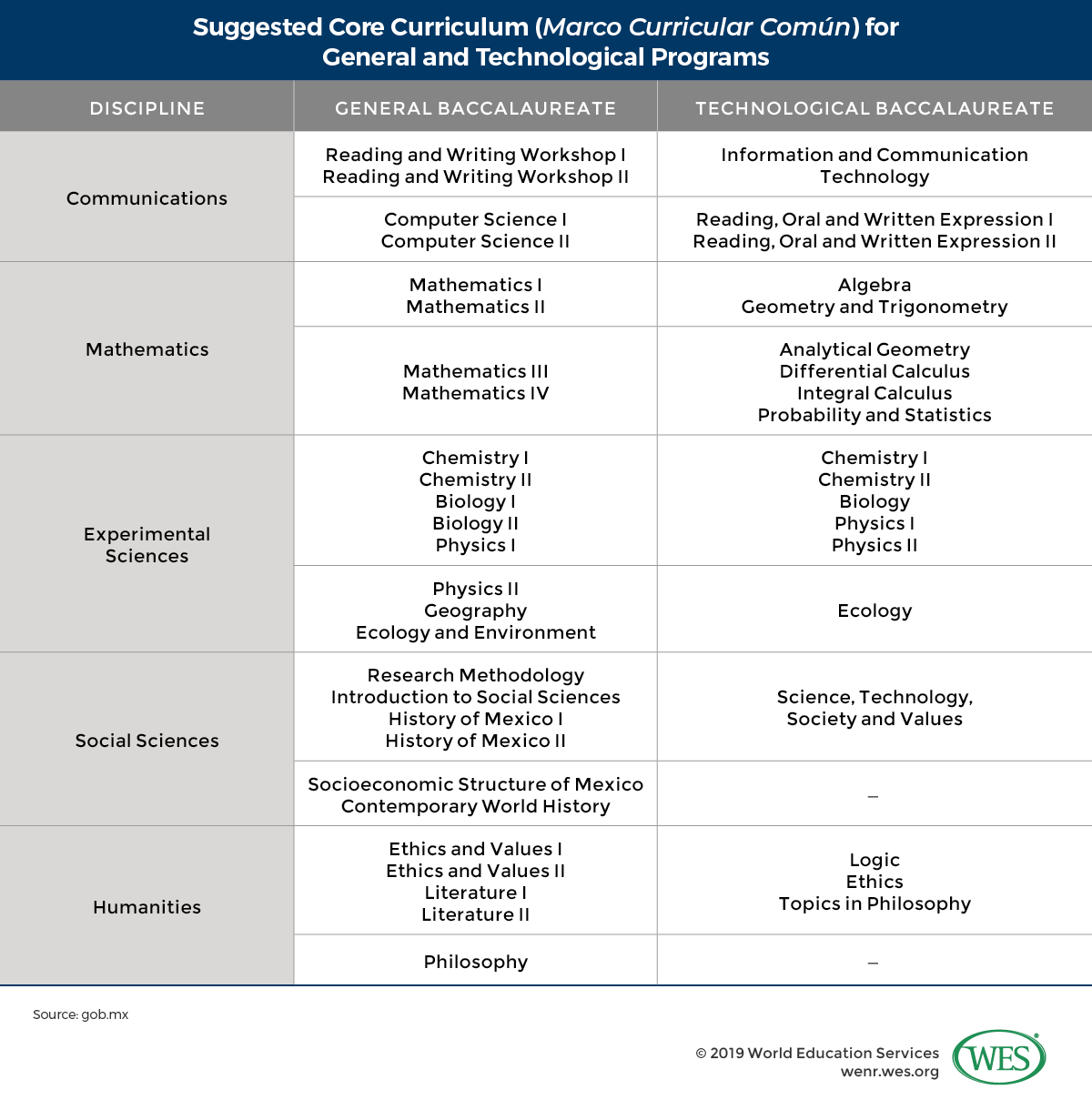
Vocational and Technical Pedagogy (Educación Profesional Técnica)
There are two types of upper-secondary vocational credentials in Mexico: the Título de Técnico Profesional(title of professional person technician) and the Profesional Técnico Bachiller (professional person technical bachelor). Both types of programs were initially designed as last programs preparing graduates for entry into the labor market place—graduates receive a cédula profesional (professional license) in specific vocations. However, since 1997, graduates take also been officially eligible for access to post-secondary degree programs. That said, the level of articulation with higher teaching in the applied vocational programs is lower than in other upper-secondary programs, and most graduates bring together the labor strength rather than enroll in higher education. Most holders of the Profesional Técnico Bachiller awarded by private schools do not continue on to higher didactics. Many graduates are from households of lower socioeconomic status.
The primary oversight body in vocational education is the National Higher for Technical and Professional Educational activity (Colegio Nacional de Educación Profesional Técnica, or CONALEP), which functions as a federal regulatory authority while information technology's simultaneously a large network of schools. About vocational schools, nevertheless, are funded past the state governments.
Vocational specializations differ past state and include fields like accounting, construction, electronics, information technology, mechatronics, optometry, refrigeration technology, or tourism. Overall, there are about fifty different specializations on offering in dissimilar parts of Mexico.four The trend is toward the national standardization of programs and a reduction in the number of specializations. All programs take a general academic cadre component that has been expanded since the introduction of the new national high schoolhouse system. Beyond that, curricula are applied rather than theoretical, and ordinarily include industrial internships, as well as a social service requirement mandated by constabulary. During the non-paid social service— usually completed in the second half of the plan—students are expected to apply their acquired skills for the benefit of the community. Upon completion of the program, graduates in near specializations are granted both a high school credential and a professional license (Cédula Profesional) that entitles them to work in regulated vocations.
College Instruction
Mexico's higher pedagogy organization has grown rapidly, if unevenly, over the past decades. According to Mexican government data, tertiary enrollments accept more than doubled since the late 1990s. There are presently iii.nine 1000000 tertiary students enrolled in regular programs, and another 696,000 studying in distance education mode (up from 125,000 in 1997/98). However, as in all parts of Mexico's didactics system, enrollment gains are heavily skewed toward wealthier states. Tertiary enrollment ratios in Chiapas, for instance, are fully 60 percent below those of Mexico City.
At that place are more than three,800 degree-granting HEIs with over 7,400 connected teaching institutions in Mexico. Many new private providers have sprung up beyond the country in recent years. Their number now exceeds that of public providers by a wide margin. However, enrollments are primarily concentrated in the public sector—unlike in other Latin American countries. In Chile, for instance, private enrollments now outnumber those at public HEIs. The reason is, United mexican states's public autonomous universities and state and federal institutions have expanded their capacities at a slightly faster clip than smaller private HEIs. Every bit of 2017/eighteen, 30 percent of 3rd students studied at individual institutions (downwards from 33 percent in 2009), while 70 percent attended public HEIs. Democratic institutions enroll 36 per centum of tertiary students; country institutions, 21 percentage; and federal institutions, 13 pct.
Mexico's tertiary organization is characterized past disparities in quality betwixt HEIs. Oversight criteria for private HEIs vary past jurisdiction and are frequently inadequate. Equally a upshot, the individual sector features only a small number of prestigious elevation-quality institutions, while a substantial cohort of newer upstart schools seek to absorb demand without much regard for either bookish standards or student outcomes. These for-profit schools cater by and large to students who are unable to access public institutions because of enrollment quotas and competitive entrance examinations. Nevertheless, given the decentralized nature of quality assurance in Mexico, disparities in quality also exist between public HEIs.
The superlative Mexican institutions included in international university rankings include the National Autonomous University of United mexican states and the private Monterrey Found of Technology and Higher Didactics, both ranked in the 601–800 range in the electric current Times Higher Teaching World University Rankings and featured among the top universities in Latin America. Other reputable HEIs include the Metropolitan Autonomous University, the Autonomous Academy of Querétaro, the Instituto Politécnico Nacional, and Universidad Anáhuac.
Types of HEIs
HEIs in United mexican states include public and individual institutions. Public institutions encompass various different types, such as federal universities, land universities, large numbers of technical universities and technical institutes (institutos tecnológicos), and polytechnic universities, as well as teacher training colleges, dedicated research centers, and 13 intercultural universities (universidades interculturales) for ethnic peoples, along with various HEIs overseen by other government entities like the military. So-called state universities with solidarity support (universidades públicas estatales con apoyo solidario) are a group of 23 state universities that receive special funding from the federal government. They are designed to educate underserved populations in marginalized regions. There'due south too a large public open up and distance education university, the Universidad Abierta y a Distancia de México.
Autonomous HEIs
While autonomous HEIs are publicly funded, these institutions savour a high degree of academic and administrative freedom. Many of them independently supervise individual HEIs and validate programs offered past individual providers in both college and upper-secondary education. Each state in United mexican states except for Quintana Roo has at least one autonomous academy, oft located in the state capital letter. The largest democratic HEIs are the Universidad Nacional Autonóma de México with virtually 243,000 students, the Universidad de Guadalajara, and the Universidad Autónoma de Nuevo León with some 130,000 students each. These institutions are also the largest higher teaching providers in Mexico. Upper-secondary schools administered by autonomous universities tend to have much larger enrollments by schoolhouse than country schools as well (1,200 versus 300, on average).
Virtually of the larger autonomous institutions were granted autonomy betwixt the 1920s and the 1970s and have facilitated social mobility for generations of students, mostly in large urban centers. Merely a few smaller institutions accept been granted autonomy since the 1970s. Overall, nearly democratic institutions are reputable universities with a long tradition of enquiry and innovation. They besides tend to perform meliorate in national and international rankings compared with other Mexican HEIs. In 2017/eighteen, autonomous institutions administered a total of 1,237 school units with 1.4 million students, and had a combined faculty of more than 133,600.
Land HEIs
Country HEIs encompass diverse types of institutions including regular universities, polytechnic universities, and technical institutes. They operate under the auspices of the state governments, which appoint their leadership staff and determine the structure and content of academic programs. Many of them are in less populated rural areas, where they may be the only higher education providers within reach. While state universities vary in size, they usually have fewer students than democratic institutions (just a fourth of enrollment numbers, on average). Nevertheless, some land governments have invested heavily in education in contempo years and expanded both the capacity and the number of HEIs. Between 2008/09 and 2017/18, nationwide enrollments in state HEIs more than than doubled, from 374,000 to 800,000 students.
In general, state HEIs tend to serve less affluent students when compared with other types of institutions. Well-nigh are in small-scale cities and rural areas, where they provide virtually tuition-free education to vulnerable groups. Their quality varies. Some state universities are well-funded, high-quality providers housed in modern facilities that produce graduates who accept good employment prospects, but others are poorly equipped and isolated. They collaborate little with other HEIs or industry, and their enrollments are low. Critics have observed that several of these institutions were planned without proper needs assessments, fifty-fifty though they represent an effort to aggrandize access to underserved populations.
Federal HEIs
Federal HEIs are overseen and primarily funded by SEP and other federal government agencies. They represent a relatively minor but various group of institutions in terms of size, physical location, programs, and bookish quality. The socioeconomic composition of the student body in Mexico City—where more half of all students attention federal universities are enrolled—is comparable to that of autonomous universities, but it resembles that of state HEIs in other provinces. Overall, 511,000 Mexicans studied at federal HEIs in 2017/xviii.
Until recently, the Instituto Politécnico Nacional was the largest of these providers, enrolling roughly 120,000 students. However, in 2014 the Mexican government created an even larger federal institution when it merged 266 public technical institutes into the new Tecnológico Nacional de México. Other federal HEIs include enquiry centers of the National Council of Science and Technology, a number of intercultural and technological universities, as well equally a few teacher training colleges and institutions run by the war machine, the justice department, the ministry building of wellness, and other government bodies. On average, federal HEIs are larger than state institutions, in function because they have been in existence for a longer time, and many are located in Mexico City.
Unlike autonomous institutions, federal institutions are tightly regulated by federal regime, so that changes in government can have far-reaching implications for their administration, staffing, and written report programs. The Mexican Congress could technically grant autonomy to institutions like the Instituto Politécnico Nacional, only there'south a contentious debate regarding this upshot. Critics of the federal academy organization debate that government control is detrimental to academic quality and turns higher education into a political football. Others debate that it is the very part of the Mexican state to shape college instruction and seek to increase political control even over institutions that already have autonomy. Since the early 1990s, the federal authorities has increasingly withdrawn from straight administering HEIs and transferred the oversight of many teacher training colleges, technical institutes, and others to state governments, or granted these institutions autonomy. The relative share of students enrolled in federal HEIs has decreased because of this procedure.
Private HEIs
This group includes the largest and near various number of schools. On one side of the spectrum are well-established, high-quality elite providers like the Tecnológico de Monterrey, the Instituto Tecnológico Autónomo de México, Universidad de las Américas Puebla, Universidad Iberoamericana, Universidad Anáhuac, Universidad Panamericana, and a few others. On the other side are many pocket-sized and new for-profit institutions of lesser quality. Whereas annual tuition fees at public universities are relatively low (USD$378 to USD$818), individual HEIs accuse fees of anywhere between USD$1,636 and USD$16,353 per annum. The fees charged reportedly have little to practise with the quality of education offered.
Although the relative per centum of enrollments in individual institutions has decreased over the last decade, the bodily number of students has increased from 897,800 to ane.15 million since 2009. What's more than, the number of private HEIs has simultaneously doubled to more than than 3,000. This expansion is driven by a growing number of Mexican middle-income households that can pay for individual education, among other factors. Students from depression-income households typically simply attend private HEIs if they tin can secure scholarship funding or pupil loans.
Given capacity limits at public HEIs, individual institutions enable more Mexicans to participate in higher instruction. Yet, the rapid spread of small individual providers, some of them offer just a handful of programs, has strained the capacity of Mexican authorities to provide effective quality command—a problem exacerbated by the mushrooming of hybrid and altitude learning programs. Without generalizing, lax quality assurance mechanisms in a number of states have allowed some providers of dubious quality to operate in United mexican states. As a result, the growth of individual didactics in Mexico is a trade-off betwixt boosting enrollment ratios and improving quality standards. Some state governments have curbed private educational activity and revoked the recognition of questionable providers, while others accept opened the gates to untested transnational altitude education programs. There's presently no national consensus on how to address the quality assurance of private institutions.
Private HEIs tin obtain authorization and recognition of their degree programs from the SEP at the national level, or from state departments of teaching. They can also seek validation from or incorporation into democratic universities. It should be noted, nonetheless, that not all autonomous universities validate private programs, and that some have very strict requirements. In most cases, private institutions are authorized and recognized by land governments. A small number of tiptop institutions take been designated equally "free" (libre)—a prestigious status that exempts HEIs from several requirements and can but be conferred by the president of Mexico. At that place are also some unregulated private HEIs, including religious institutions, that operate outside of Mexico's formal system of instruction.
Quality Balls
All officially recognized HEIs in United mexican states are conferred a Reconocimiento de Validez Oficial de Estudios (RVOE, or recognition of official validity of studies) past the federal government or state governments. While autonomous universities and regime institutions are automatically recognized, individual institutions must in nigh cases exist authorized by government government to obtain the RVOE. They must have adequate facilities and teaching staff, submit a self-assessment, and get blessing of their study programs from the federal Comisión Nacional de Evaluación para la Educación Superior (CONAEVA).
RVOEs are issued for each private programme of report. While private institutions may issue their own degree certificates and bookish transcripts, they are past law required to display the RVOE on their academic records. RVOE status can exist verified in an online registry. Some caste certificates and transcripts may besides bear the seal or signature of the government agency that oversees the institutions that upshot the. Alternatively, private HEIs may be affiliated with public autonomous universities by incorporación. In this example, caste-granting authorization resides with the autonomous university with which the incorporated institution is affiliated.
Both public and private HEIs can too seek voluntary accreditation of their programs by agencies under the El Consejo para la Acreditación de la Educación Superior, A.C. (COPAES, the Higher Education Accreditation Council). Established in 2000 to improve quality standards nationwide, COPAES is an contained, private nonprofit organization that oversees 30 smaller programmatic accrediting bodies in unlike disciplines, such as social sciences, law, or medicine. Those accrediting bodies so ascribe undergraduate programs, designating them to be of "good quality" (buena calidad) if successful. Institutions are required to reapply for reaccreditation of their programs every five years. Accredited programs savor higher bookish prestige both nationally and internationally, and are eligible for additional governmental financial support and grants. Every bit of February 2019, COPAES accredited 3,962 study programs, accounting for 47 percent of all undergraduate enrollment in higher education.
Graduate programs are assessed past the National Quango for Scientific discipline and Applied science (Consejo Nacional de Ciencia y Tecnología, or CONACYT). CONAYCT evaluates especialista,maestría, and doctorado programs (see below). Those that run into the minimum standard are designated programas de posgrado de excelencia (graduate programs of excellence) and listed on the National Registry of Graduate Studies (Padrón del Programa Nacional de Posgrados de Calidad or PNPC). Programs are classified as either "Loftier Level" (Alto Nivel) or "Competent on an International Level" (Competencia Internacional).
Note that only few individual institutions apply for accreditation or submit their programs for voluntary quality assurance audits. Less than ten percent of private HEIs have official accreditation for their undergraduate programs. However, the overall number of institutions, both public and private, that offering accredited programs has doubled over the past decade, and 64.5 per centum of undergraduate students at public institutions study in accredited programs, but wide disparities persist betwixt states and regions.
Access to Higher Didactics
Access criteria at Mexican HEIs vary greatly, depending on the plan and demand. Completion of upper-secondary educational activity is usually the minimum benchmark, but entrance examinations and high school GPAs are typically used to select students. Many universities require a minimum grade average of 7 or 8 out of ten, but elevation institutions may require a college minimum. Certain university departments may also crave that students have completed high school programs in a track related to the plan of study.
In addition, some less selective institutions have open up enrollment policies. Older students who did not complete high school may gain admission into federal HEIs by taking a national high school equivalency examination. Nonetheless, most large universities that are not administered by the federal authorities, including private autonomous universities, have their own admissions tests. There's a national higher education archway test called EXANI-II, but while growing numbers of HEIs are admitting students based on this exam, it'southward presently used just for sure programs. The number of students sitting for the exam has increased from about 419,000 in 2006 to 740,000 in 2017. Some universities may also use a Spanish version of secondary schoolhouse examinations designed by the College Board, which in the U.S. are used as a kind of admissions examination.
Credit Organisation and Grading Scale
In that location'due south no nationwide credit system in Mexico, and not all Mexican HEIs, especially private ones, indicate credits on their academic transcripts. However, United mexican states's Association of Universities and Higher Education Institutions (ANUIES) in 2007 put forward a credit organisation called SATCA (Sistema de Asignación y Transferencia de Créditos Académicos). This arrangement defines 1 credit unit as 20 hours of "learning activities," and determines the minimum number of credits required for alicenciatura program as ranging from 180 to 280 credits, depending on the length. However, information technology should be noted that the new system is being implemented only slowly, and that non all public institutions use it. Autonomous universities most commonly utilise a scale that defines a credit equally 1 hr of classroom pedagogy over the form of a semester.
Grading scales vary between HEIs likewise. The table below shows three commonly used scales, including the WES conversion. Seven is the passing grade on many undergraduate scales, but a class of 8 may be the passing score at the graduate level.
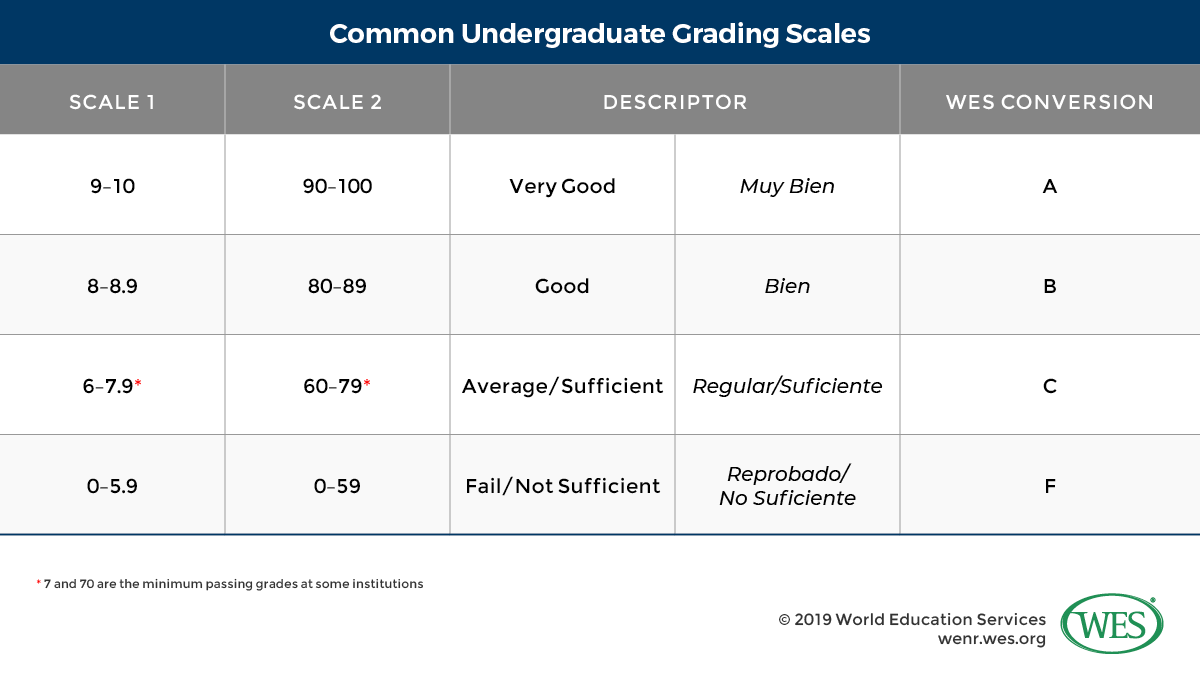
The H igher Education Degree Structure
Degrees awarded in Mexico include shorter acquaintance caste-blazon qualifications, bachelor's degrees (licenciatura), master'south, and doctoral degrees. Most Mexican students are enrolled at the undergraduate level—89 per centum studied in licenciatura programs, including instructor training programs, in 2017/18. But six percentage studied at the graduate level, and less than 5 percent in mail-secondary associate programs.
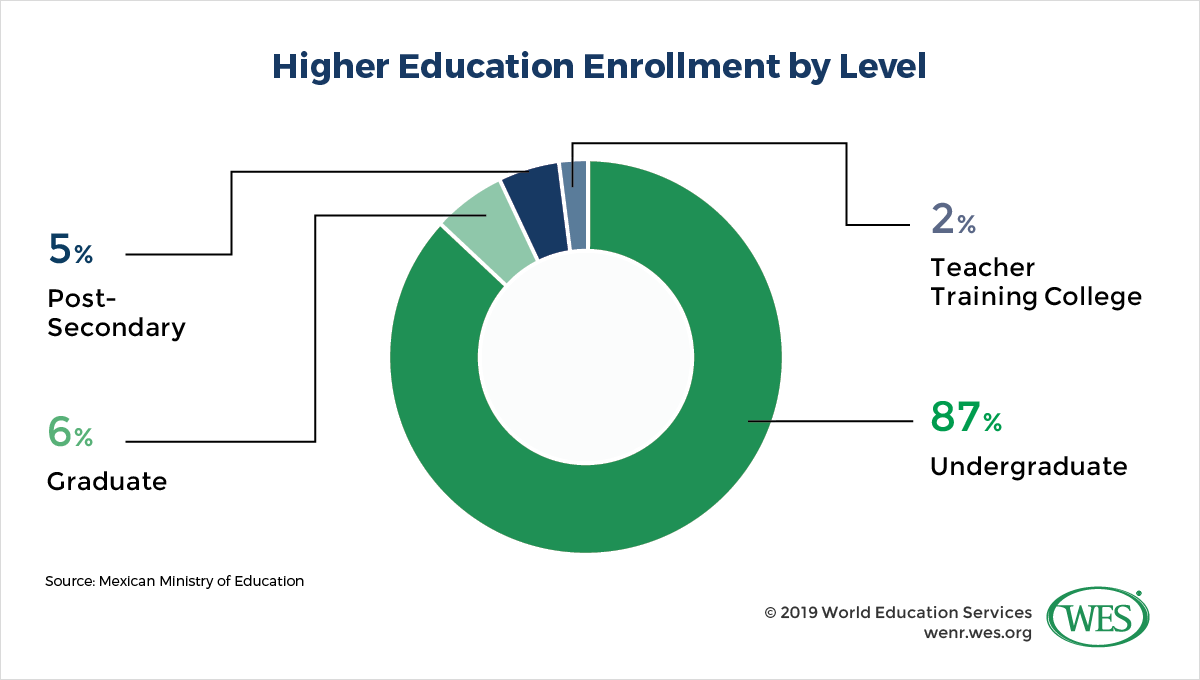
Associate Degree (Técnico Superior Universitario/Profesional Asociado)
Shorter vocational-technical programs at the post-secondary level are relatively new in Mexico. These programs are offered mainly byuniversidades tecnológicas and typically terminal two years, although some three-year programs as well be. They require 75 to 120 credits at HEIs that use the SATCA credit system. Curricula are employment-geared and as such are applied in nature: Just xxx percent focus on theoretical instruction, and 70 percent on practical instruction and projects. Until the appearance of the technical universities, nigh vocational-technical programs were offered either at the upper-secondary level or, very rarely, in longer 4- or five-year academy degree programs.
The last credential awarded is called the Técnico Superior Universitario (university higher technician) orProfesional Asociado(professional acquaintance). While many of these programs are considered terminal qualifications designed for employment, they may also grant advanced placement in collegelicenciatura ortitulo profesional programs, depending on the institution. There are presently but 273 schools in United mexican states offering associate-type programs, well-nigh of them state HEIs. Programs are offered in a variety of specializations, such as allied wellness, business organization administration, it, transportation, or tourism.
Certificado /Diplomado Programs
Other short, applied programs lead to acertificado ordiploma. These document-level programs run from 1 to three semesters, while and then-chosen salida lateral (lateral exit) programs can last up to four years and may sometimes business relationship for the starting time one or ii years of alicenciatura ortitulo professional person program.
Licenciado andTitulo Profesional Degrees
Both thelicenciado andtituloprofessional person, terms that are used somewhat interchangeably, are first-caste programs lasting betwixt three and six years. Programs usually include both course work and a thesis or degree projection. In full general, curricula are specialized and impose few general academic course requirements. Some HEIs offering more U.S.-style curricula.
Programs in professional disciplines similar compages, dentistry, or veterinarian science are v years in length. Medicine is a half dozen-year program. Graduates are typically licensed to exercise at the indicate of graduation. Graduates receive a professional license (célula professional person) and are entitled to comport an official title, such as Titulo de Abogado (title of lawyer), Titulo de Arquitecto (architect) or Titulo de Ingeniero (engineer). Graduates from all programs are also required to complete a mandatory social service "internship" of at least 480 hours, or up to one year in health-related professions. Given that this internship is unpaid, it affects graduation rates, since some students are unable or unwilling to see this requirement. According to statistics from ANUIES, only 52 percent of the students that enroll at public institutions complete the entire program and earn a full-fledged degree document, while 48 pct either driblet out or complete the form work without meeting all the caste requirements. Graduation rates are higher at private institutions and among students from higher income households.
The Carta De Pasante
Students who take completed all their grade work merely not the thesis or other graduation requirements may receive a document called thecarta de pasante (leaving certificate), and attain the status of anegresado/pasante. Students who obtain this status practice not have a caste, and they exercise not take the professional person privileges in their subject area that are accorded tolicenciados (holders of the licenciate degree). Nonetheless, thecarta de pasante may qualify students for provisional admission into graduate school at some institutions.
Although students who earn the classification ofegresado/pasante cannot be licensed to practise in their respective profession, they exercise often find employment in their subject, often in an auxiliary capacity for the more regulated professions. For example, a student in a law program who has obtained thecarta de pasante, but not thelicenciatura degree cannot practice as a licensed lawyer, but might be able to work as a paralegal. In other, less regulated industries, such as business administration or applied science, anegresado/pasante might well find a very desirable position without the benefit of the finallicenciado caste.
Note: Many HEIs effect students a "diploma" post-obit completion of course work in a programme, but earlier completion of the graduation requirements, and thus before the licenciado degree has been officially awarded. Students may as well receive a "diploma por pertenecer a la generación de XXXX" (diploma for belonging to the course of XXXX).
Grado De Maestro (Master's Degree)
About unremarkably two years in length (between 80 and 120 SATCA credits), themaestríaprogramrequires the completion of course work and typically a thesis. A bachelor's degree (Licenciatura/Título Profesional) in a related subject is usually required for admission.
Participation rates at the graduate level in Mexico are depression compared with those of other OECD countries. Tuition fees for graduate programs are considerably higher than for undergraduate programs, which are nearly gratis at public HEIs. Private HEIs are represented more prominently at the graduate level, accounting for 50 percent of total enrollments.
Graduate programs are offered equally research oriented as well as more than professionally oriented. The latter tend to be more flexible in terms of commitment and form scheduling, since they are often tailored to working professionals seeking to upgrade their skills. Equally of May 2019, in that location were 1,229 main's programs listed equally meeting quality standards in CONACYT's national registry, although diverse other programs are offered throughout the state.
Especialista (Specialist)
Another type of shorter postgraduate program are the cursos deespecialización. Theseprograms also build on the licentiate degree, simply usually take more applied curricula than full-fledgedMaestríaprograms, although some may also establish the first year of aMaestría. Completion of course work is required; a thesis is generally not. Programs are usually one year in length (at least 45 SATCA credits), but there are likewise office-fourth dimension programs that require fewer credits to complete. Graduate medical education programs, which are upwards to four years in length, are an exception.
Especialista programs generally require a bachelor's degree for admission, but some HEIs admit undergraduate students who have completed their course work but non however satisfied the final graduation requirements. In these cases, the offset semester of the especialista plan may satisfy the graduation requirements in lieu of a thesis, test, or degree project.
Doctorado (Doctorate)
Doctoral programs are concluding research qualifications that require at least ii years of course piece of work as well as original research and the defence force of a dissertation. Admission is by and large based on a principal's degree in a related discipline, but qualified holders of undergraduate degrees may likewise exist admitted, in which instance the programs involve more than grade work. CONACYT presently lists 653 doctoral programs in its national registry of quality graduate programs. Near are offered by pubic HEIs with autonomous universities being the main providers.
Teacher Didactics
Teachers are trained at dedicated state-supervised teacher training colleges, theescuelas normales superiores. Teachers at all levels are required to concord a licentiatura-level qualification, which is called theTítulo Profesional de Educación Normal (Professional Title of Normal Education). Programs are iv years in length and require a bachillerato for admission.
Through the SEP the federal authorities oversees teacher education and determines curricula, assessment standards, and staffing at teacher training colleges. Equally a consequence these institutions are frequently more than politicized and influenced by changes in regime than other public HEIs. Acme level administrators are oft appointed and replaced based on political affiliation, and there's a considerable degree of corruption at these institutions.
A related problem is that teaching standards at these institutions are not always optimal, notwithstanding numerous reforms and efforts to strengthen teacher training over the past 2 decades. In 2014/xv, but 49 percent of graduating students achieved acceptable results in examinations conducted by the National Plant for Educational Evaluation. Given that overall graduation rates at teacher training colleges are high, the poor examination results enhance questions about the teaching and graduation standards at teacher preparation colleges, and erodes public trust in teacher pedagogy in Mexico.
WES Documentation Requirements
Secondary Education
- Academic transcripts (certificado de estudios /calificaciones)—sent directly by the institution attended
- Precise, English translation of all documents not issued in English—submitted by the bidder
Higher Education
- Bookish transcripts (certificado de estudios /calificaciones)—sent directly by the institution attended
- Photocopy of degree certificate—submitted by the applicant
- For completed doctoral programs, an official letter confirming the conferral of the degree—sent direct by the institution
- Precise, English translation of all documents not issued in English language
Sample Documents
Click here for a PDF file of the academic documents referred to below.
- Bachiller (democratic academy)
- Bachiller (private establishment)
- Título de Técnico Superior Universitario (state institution)
- Título de Físico (autonomous university)
- Licenciada (individual institution)
- Carta de Pasante (autonomous university)
- Grado de Maestro (individual institution)
- Título de Doctora (federal institution)
i. UNESCO Data
ii. PISA stands for Plan for International Student Cess.
3. Legislation from 2002 made 1 year of early on childhood teaching compulsory beginning in the 2004/05 academic year and extended information technology to 2 years in 2004/05 and three years in 2008/09. See: https://www.dgespe.sep.gob.mx/public/normatividad/acuerdos/acuerdo_348.pdf
4. Equally an example, encounter the specialization on offer in the states of Jalisco and Nuevo León.
Source: https://wenr.wes.org/2019/05/education-in-mexico-2
0 Response to "Jamie York Press Content Uploads 2017 Summary Math Skills"
Post a Comment